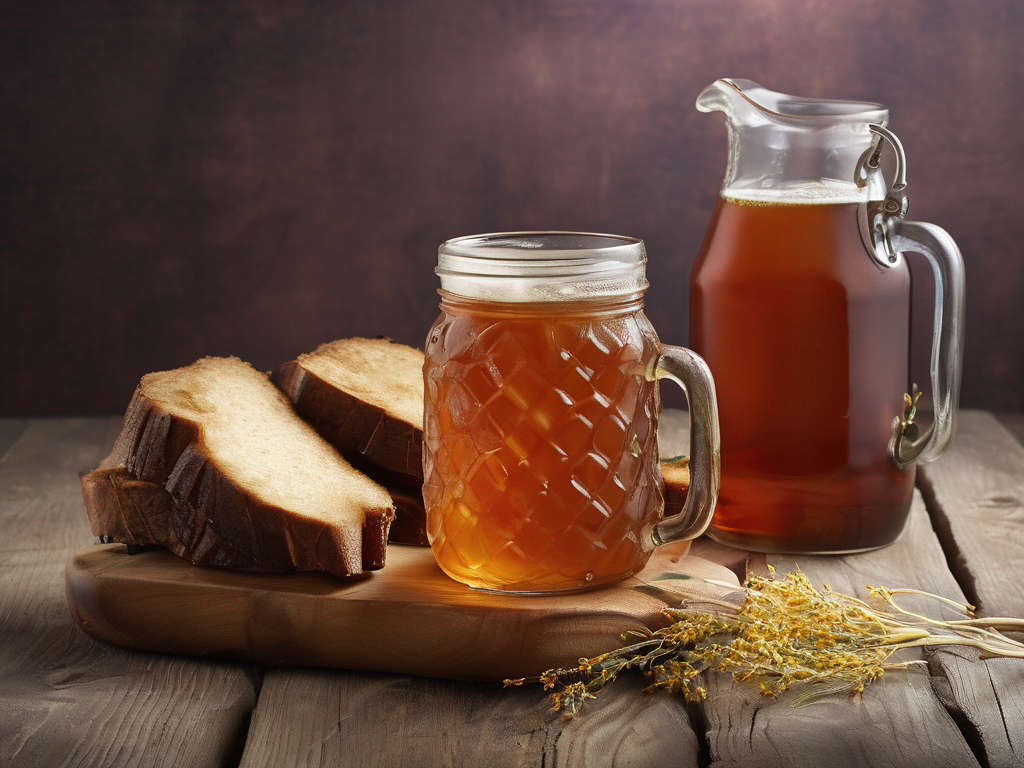
Is Your Kvass Still Good? Signs That Your Kvass Has Gone Bad
Get Your Free Food Safety Cheat Sheet
30 most common foods with instant answers. Print it and stick it on your fridge—completely free!
Is Your Kvass Still Good? Signs That Your Kvass Has Gone Bad
Kvass is a popular fermented beverage that originated in Eastern Europe. Made from rye bread, kvass has a slightly tangy and refreshing flavor that is perfect for hot summer days. However, like any fermented food or beverage, kvass can go bad if not stored properly or if left for too long. In this blog post, we will discuss how you can tell if your kvass has gone bad and what steps you can take to ensure its freshness and safety. (Kvass)
Understanding Kvass and Its Shelf Life
Kvass is a traditional Slavic drink that has been enjoyed for centuries. It is typically made by fermenting rye bread with water, sugar, and sometimes fruits or herbs. The fermentation process gives kvass its characteristic tangy flavor and slight fizziness. When stored properly, kvass can last for several days to a few weeks, depending on the specific recipe and storage conditions.
Factors that Affect the Shelf Life of Kvass
Several factors can influence the shelf life of kvass:
- Ingredients: The quality and freshness of the ingredients used in making kvass can impact its shelf life.
- Fermentation: Proper fermentation is essential for the longevity of kvass. Over-fermentation can lead to spoilage.
- Storage: Storing kvass in a cool, dark place can help extend its shelf life. Refrigeration is recommended for longer storage.
Signs that Your Kvass Has Gone Bad
It is essential to know how to identify signs of spoilage in kvass to prevent any potential health risks. Here are some common indicators that your kvass may have gone bad:
Visual Signs
- Mold: Any visible mold growth on the surface of the kvass is a clear sign that it has spoiled.
- Cloudiness: If your kvass appears cloudy or has an unusual texture, it is best to discard it.
- Unusual Color: Discoloration or a change in color from the original brownish hue may indicate spoilage.
Smell and Taste
- Off Odor: If your kvass has a sour or unpleasant odor, it is likely no longer safe to consume.
- Off Taste: A bitter or off-flavor in the kvass is a strong indicator of spoilage.
Gas Production
- Excessive Fizziness: While a slight fizziness is normal in kvass, excessive carbonation or gas production can be a sign of spoilage.
Tips for Properly Storing Kvass
To extend the shelf life of your kvass and ensure its freshness, follow these storage tips:
- Refrigeration: Store your kvass in the refrigerator to slow down the fermentation process and maintain its quality.
- Airtight Container: Keep your kvass in a tightly sealed container to prevent contamination and exposure to air.
- Dark and Cool Place: Store your kvass away from direct sunlight and in a cool, dark place to preserve its flavor and prevent spoilage.
- Check Expiry Date: If you have purchased commercially produced kvass, check the expiry date and consume it before it expires.
Conclusion
In conclusion, knowing how to identify signs of spoilage in kvass is crucial for maintaining food safety. By being aware of visual cues, odor, taste, and gas production, you can determine if your kvass has gone bad and should be discarded. Proper storage techniques, such as refrigeration and using airtight containers, can help prolong the shelf life of your kvass and ensure its freshness. Enjoy your kvass responsibly and always prioritize food safety when consuming fermented beverages like kvass. (Kvass)
Authoritative Food Safety References
These agencies and university labs inform every tip and health precaution we publish.
USDA FoodKeeper – Cold Storage Guidelines
Official refrigerator, freezer, and pantry timelines maintained by the U.S. Department of Agriculture.
Visit USDA FoodKeeperFDA Produce Safety Rule & Grower Guidance
Field-to-fridge handling practices that prevent contamination of fruits, vegetables, and leafy greens.
Visit FDA Produce SafetyCDC Foodborne Illness Prevention Hub
Surveillance-backed guidance on pathogens, symptoms, and steps to reduce foodborne illness risk.
Visit CDC Food SafetyUC Davis Postharvest Technology Center
University research detailing optimal storage atmospheres for produce after harvest.
Visit UC Davis PostharvestPenn State Extension – Home Food Preservation & Safety
Peer-reviewed extension bulletins on safe canning, chilling, and reheating practices.
Visit Penn State ExtensionGet Your Free Food Safety Cheat Sheet
30 most common foods with instant answers. Print it and stick it on your fridge—completely free! Want more? Upgrade to the complete guide with 70+ foods.
Scan your food directly and get instant safety info using our AI-powered camera feature.